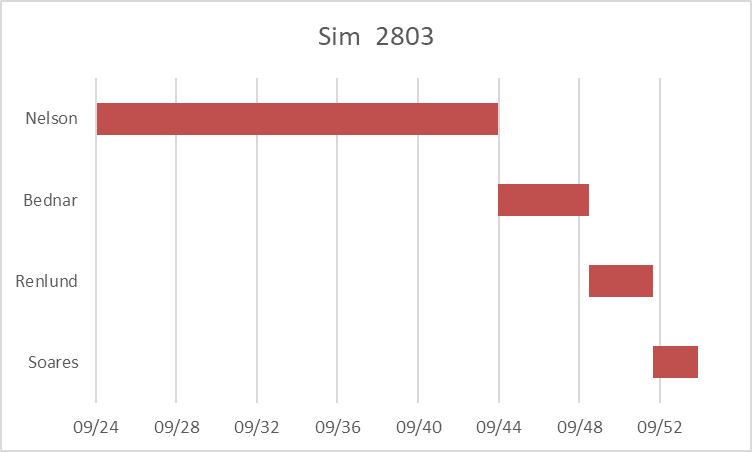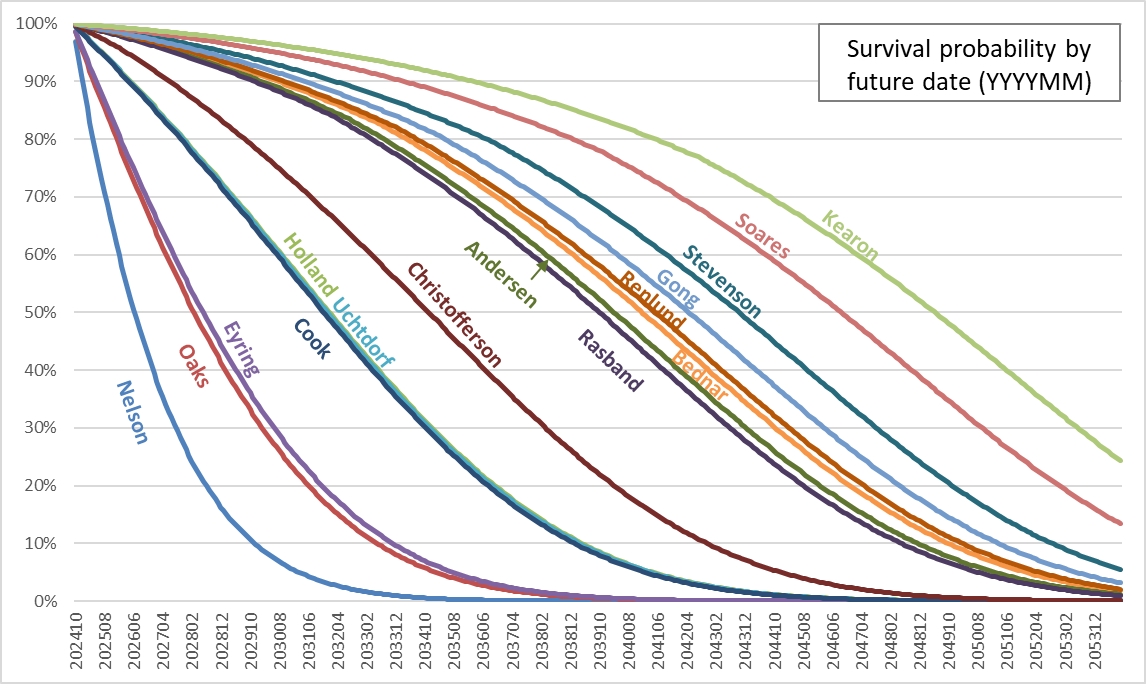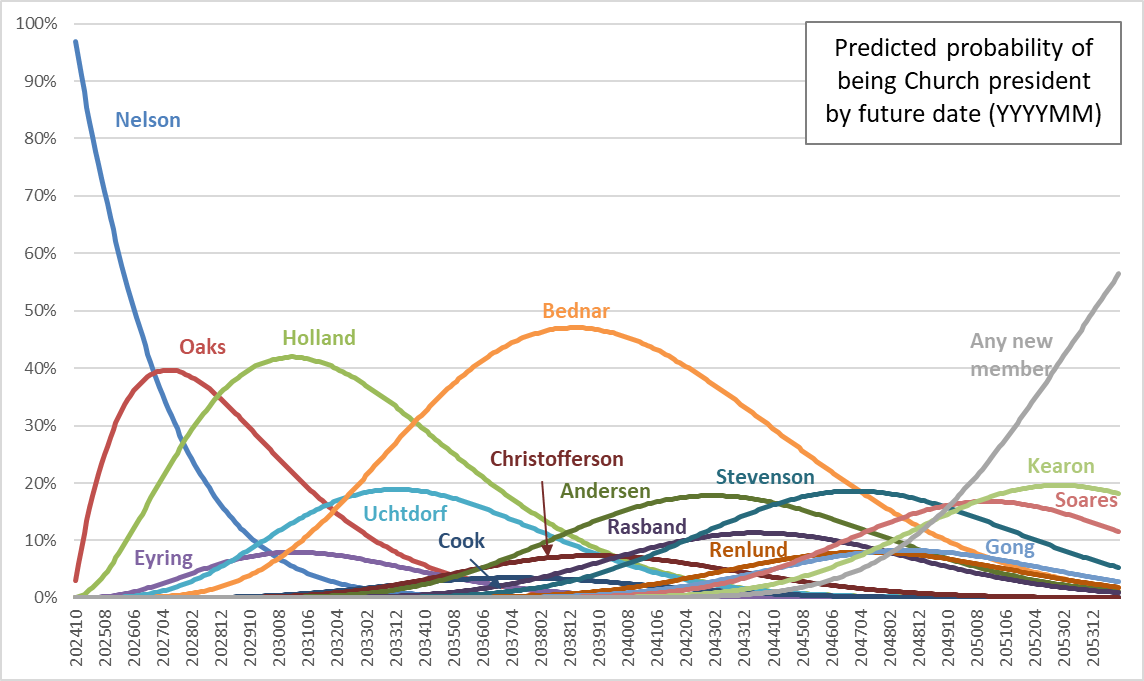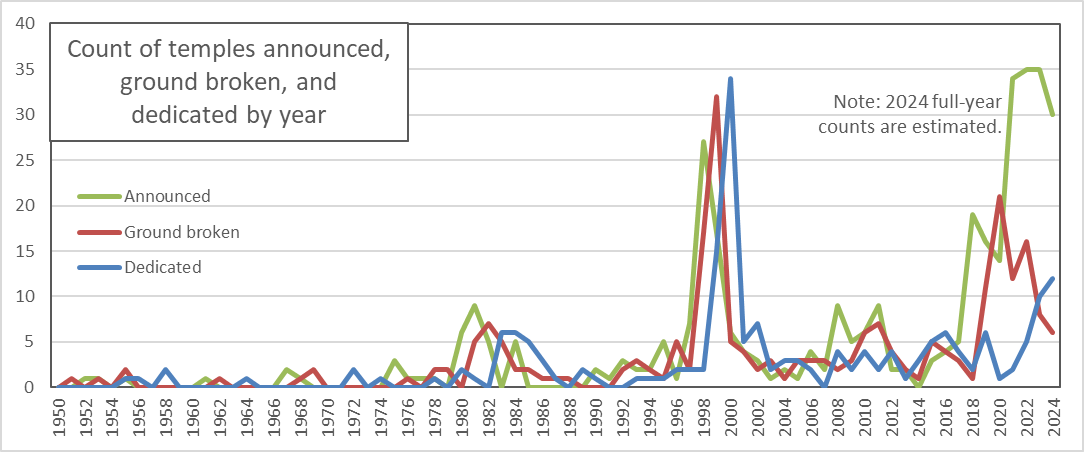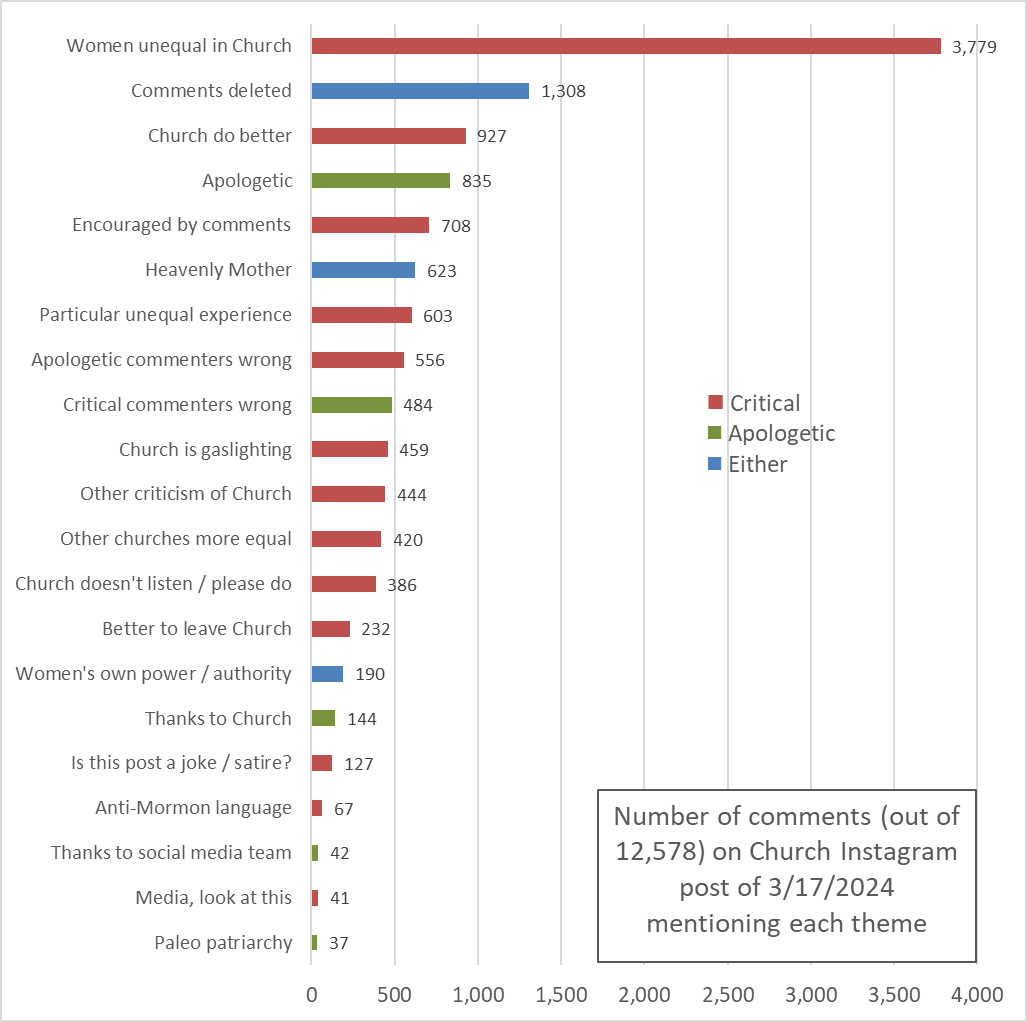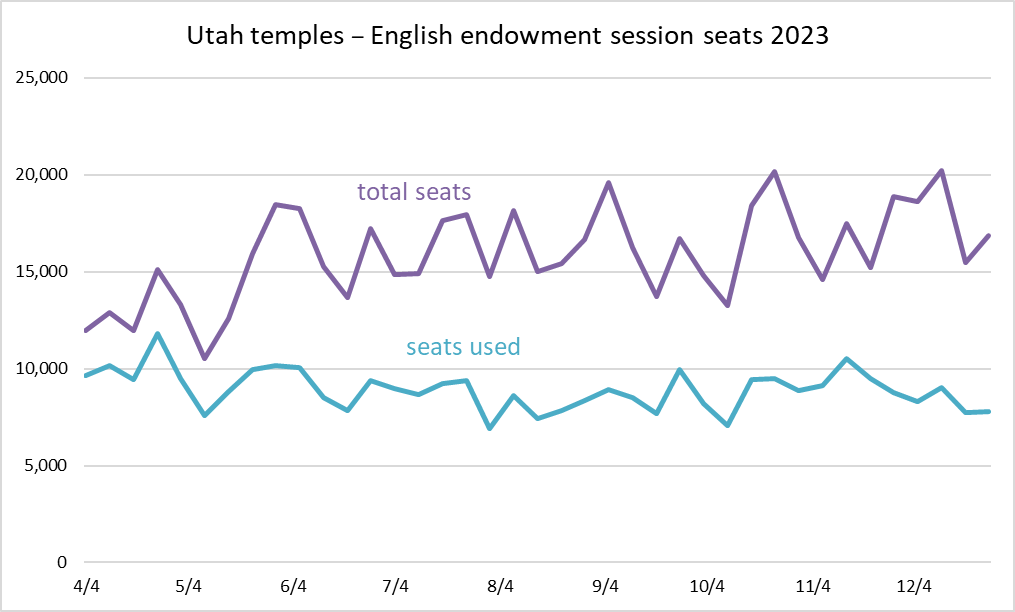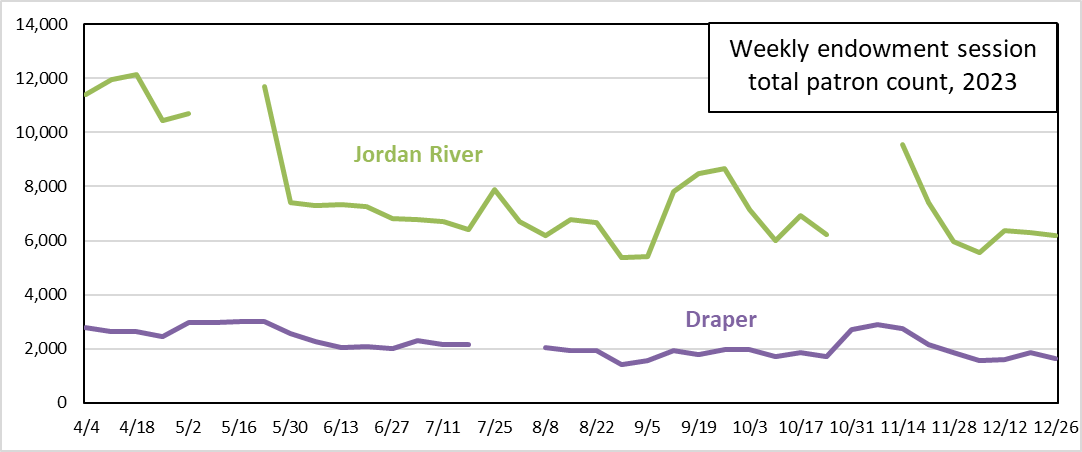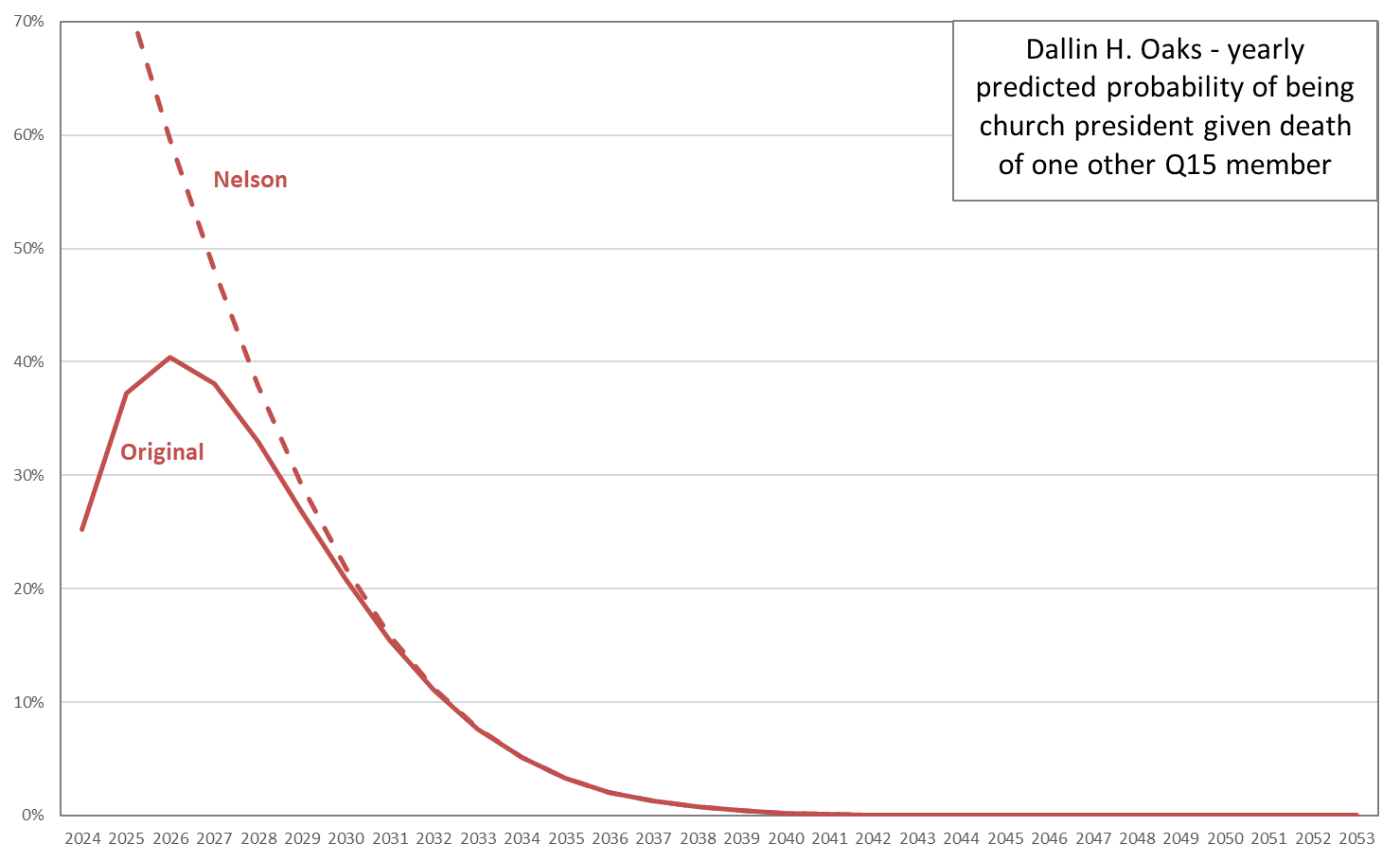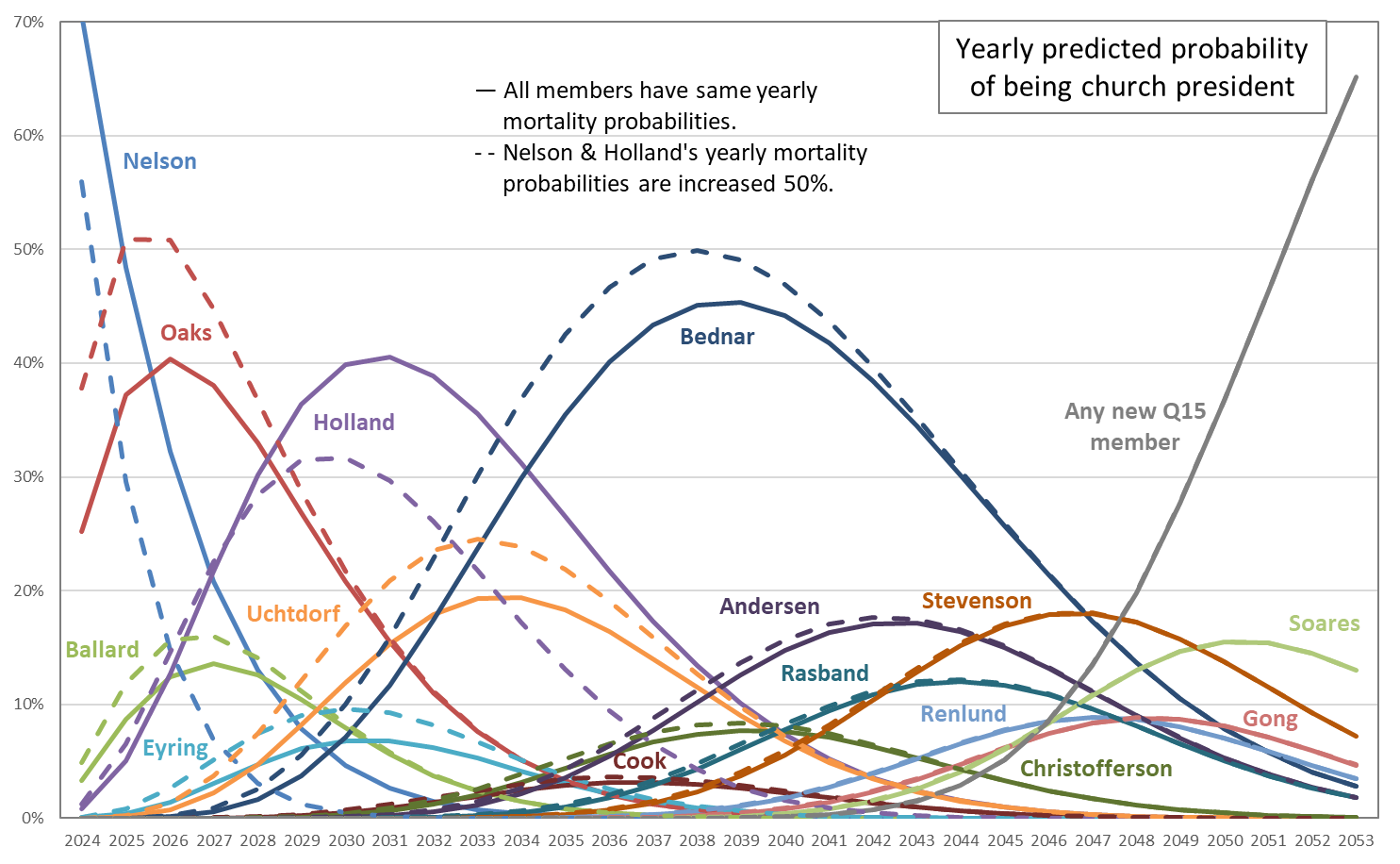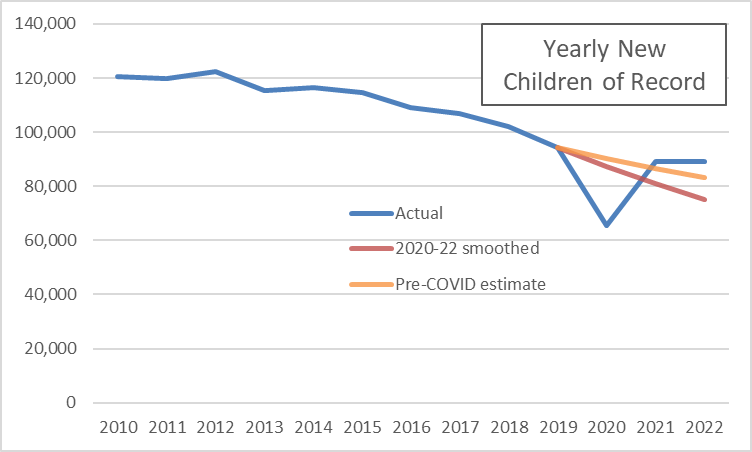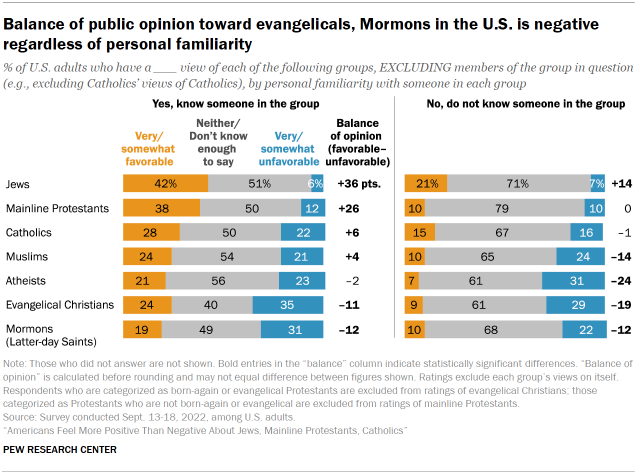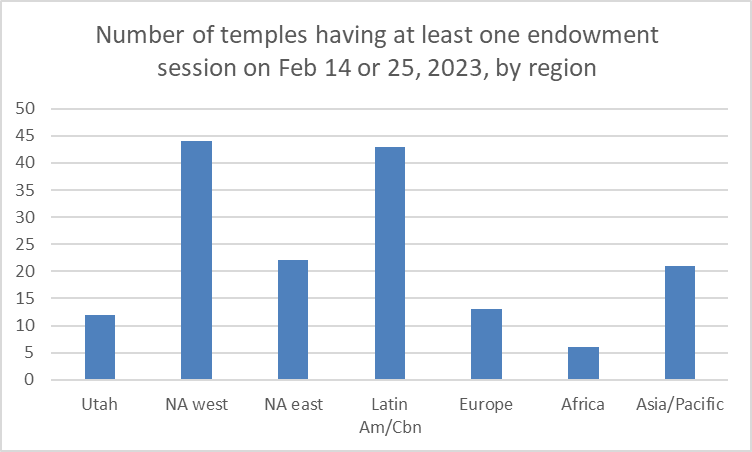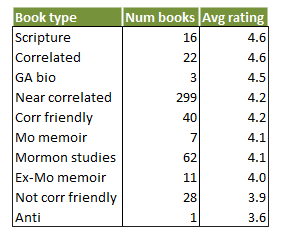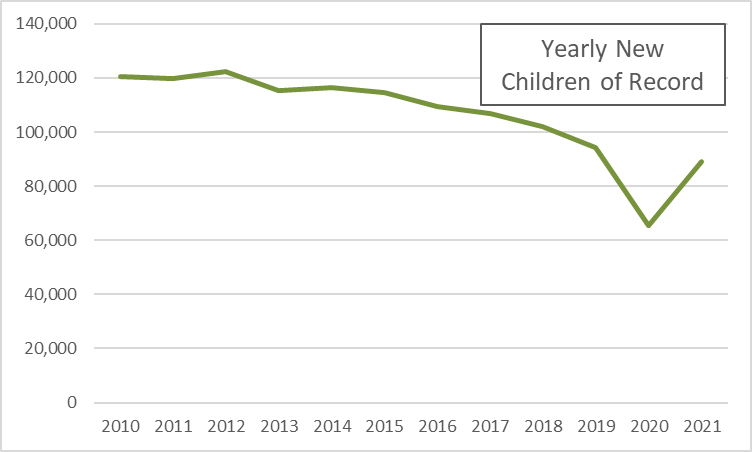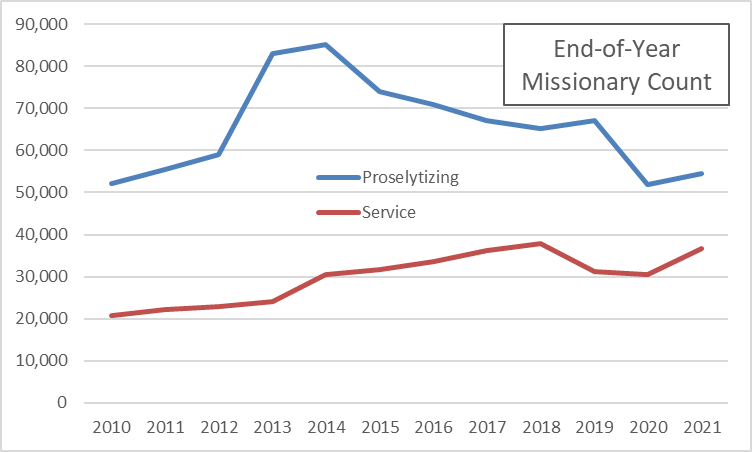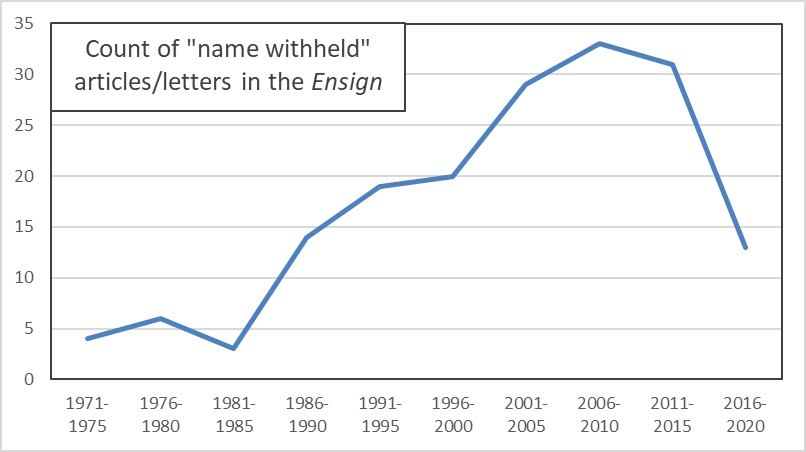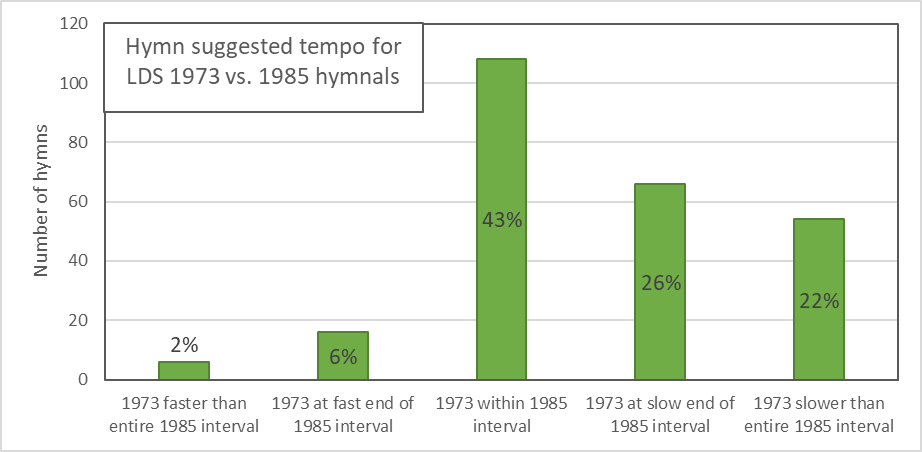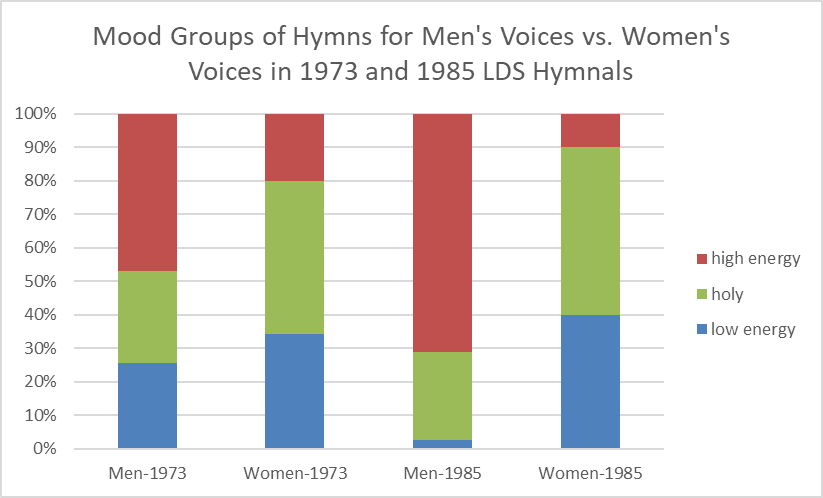This is a question people quite reasonably often ask when I blog about which Q15 members are likely to become Church president, using a mortality table as my guide. In this post, I used the same SOA mortality table I’ve been using to forecast longevity, and applied it to Q15 members who have already died, to see how well it predicted when we already know the outcome.
Of course a big weakness of this analysis is that Q15 members aren’t a big group, so it’s hard to say with much certainty how well the table is doing. In order to expand the sample a little, I looked back to all Q15 members who were in their positions in 1950 or who have been called since then, and have since died. For each month of each Q15 member’s life, starting from the later of January 1950 and his calling date, I checked how many actual months of life he had left, as well as what the SOA table said about how much life he had left.
“What the SOA table said” isn’t one number, though, because the table just gives, at each age, the probability of dying in the next year. (It breaks these down by employees and retirees, by women and men, by white collar and blue collar, and by disabled and non-disabled. I always use the white collar non-disabled men, the employees series as long as it goes, and then the retiree series.) What I do is to use these one-year mortality probabilities to find an implied distribution of probabilities of how much more time a man of a particular age has remaining. Really, what I want is just some summary statistics from that distribution: the mean and several percentiles, namely the 5th, the 25th, the 50th (also called the median), the 75th, and the 95th. At the end of the post, if you’re interested, I give a little more detail on this process.
This graph below shows a comparison of what the mortality table predicted versus how long a few Q15 members actually lived. The horizontal axis shows age, and the vertical axis shows years of life remaining. In the lower left, Bruce R. McConkie at age 66 (the left edge of the graph) had fewer than 4 years of life left, as he would die at 69. Cutting through almost the middle of the graph, Gordon B. Hinckley at age 66 had over 30 years left.

What’s interesting, of course, is the comparison of these actual life spans to what the mortality table would have predicted. The dashed black line shows the median of the distribution of probability implied by the mortality table at each age. As you can see, it flattens out as age approaches 100, as it always predicts at least a little more life (at least until age 120, where it gives a mortality probability of 100%). I haven’t shown the mean because it’s very similar to the median, falling a bit below it for younger ages, and a bit above it for older ages.
